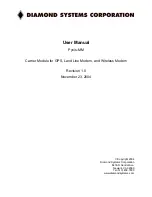
SV9401/SV9402/SV9403, SV9501/SV9502/SV9503, SV9601/SV9602 SMARTVALVE™
69-1004—01
10
repair as necessary. If the pilot flame is hard and noisy,
the inlet gas pressure may be too high. The ignition
system control has a pilot adjustment mechanism to
reduce the pilot flow, if necessary. Use the following
procedure:
1.
Remove pilot adjustment cover screw. See Fig. 4.
• Pilot adjustment is shipped at full flow rate.
2.
Turn the inner adjustment screw clockwise if the
inlet pressure is too high.
• If the adjustment screw is used to reduce pilot
flow rate, the pilot flame can become too small
for reliable system operation if the system inlet
pressure drops significantly.
3.
Replace the cover screw after the adjustment to
prevent gas leakage.
Fig. 12. Proper flame adjustment.
Check and Adjust Gas Input and
Burner Ignition
IMPORTANT
1. Do not exceed input rating stamped on the
appliance nameplate.
2. Do not exceed manufacturer’s recommended
burner orifice.
3. Make certain primary air supply to main burner
is adjusted properly for complete combustion.
4. Follow appliance manufacturer instructions.
Checking Gas Input by Clocking Gas
Meter
IMPORTANT
1. Make sure there is no gas flow through the
meter except to the appliance being checked.
Other appliances must remain off with their pilot
lights extinguished. Otherwise, subtract that
usage from the meter reading.
2. Convert the flow rate to Btuh as described in
Gas Controls Handbook, form 70-2602.
3. Compare actual Btuh to the input rate on the
appliance nameplate.
Checking Gas Input with Manometer
IMPORTANT
1. Make sure the ignition system control is in the
OFF position before removing outlet pressure
tap plug to connect manometer (pressure
gauge).
2. Shut off gas supply at the manual valve in the
gas piping to the appliance or, for LP, at the tank.
3. Move the ignition system control switch to the
OFF position when removing the gauge and
replacing the plug.
4. Remove inlet pressure tap plug.
5. Shut off gas supply.
6. Disconnect manometer and replace plug.
7. Repeat Gas Leak Test at plug with main burner
operating.
NOTE:
Check the inlet pressure before adjusting the
pressure regulator.
Standard (M) and Slow-Opening (H)
Pressure Regulator Models
1.
Carefully check the main burner lightoff to make
sure the burner lights smoothly and all the ports
remain lit.
2.
Check the full rate manifold pressure listed on the
appliance nameplate. The ignition system control
full rate outlet pressure should match this rating.
3.
With the main burner operating, check the ignition
system control flow using the meter clocking
method or check pressure using a manometer con-
nected to the output pressure tap on the ignition
system control.
4.
Adjust the pressure regulator (if necessary) to
match the appliance rating. See Table 8 for factory
set nominal outlet pressure and adjustment range.
a. Remove the pressure regulator adjustment cap
screw.
b. Using a screwdriver, turn the inner adjustment
screw clockwise to increase or counterclock-
wise to decrease the gas pressure to the
burner.
c. Replace the cap screw and tighten firmly to
prevent gas leakage.
5.
If the desired outlet pressure or flow rate cannot be
achieved by adjusting the ignition system control,
check the ignition system control inlet pressure
using a manometer at the inlet pressure tap of the
ignition system control. If the inlet pressure is in
the nominal range (Table 8), replace the ignition
system control. Otherwise, take the necessary
steps to provide proper gas pressure to the control.
NOTE:
If the burner firing rate is above 85,000 Btuh on
SV9401/SV9402/SV9403 or 150,000 Btuh for
SV9501/SV9502/SV9503 models (see Table 2
for SV9601/SV9602 capacities), it may not be
possible to deliver the desired outlet pressure.
This is an application issue, not a control failure.
Take whatever steps are required to correct the
situation.
Step-Opening (P) Pressure
Regulator Models
Step-opening models require you to check and adjust the
full-rate pressure first and then check the step pressure.
The step pressure is not field-adjustable.
PROPER FLAME
ADJUSTMENT
HOT SURFACE
IGNITER
FLAME ROD
M3350C
GROUND
ELECTRODE
3/8 TO 1/2 IN.
(10 TO 13 MM)
NOTE: GROUND ELECTRODE MUST NOT TOUCH FLAME
ROD (.050 IN. MINIMUM CLEARANCE). BEND GROUND
ELECTRODE IF NECESSARY. DO NOT BEND FLAME ROD.


































